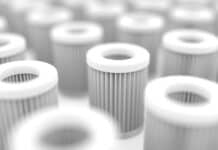By Mike McClain
In the coming months, mission critical facility vendors and service providers like my company, CEG, will be pushing to close deals before December 31. While a signed contract is great for us, what’s the motivation for you — the facility management leader — to get things done?
It may seem surprising, given the economic uncertainty caused by the pandemic, but right now is an excellent time to invest in facility upgrades. When you combine the tax benefits of the 2017 Tax Cuts and Jobs Act (TCJA) with the major financial ROI implications of the 2020 Coronavirus Aid, Relief, and Economic Stability (CARES) Act, there’s actually a real incentive for you to not only sign a contract, but also install in the same calendar year.
Understanding The Tax Benefits
The tax reforms passed by Congress in 2017 allowed businesses and manufacturers 100% bonus depreciation on qualified property and equipment. The CARES Act builds and expands upon the TCJA with the most significant change being a full deduction for qualified improvement property (QIP) costs in a single year, with no limitation on the size of the project. QIP’s are considered buildings or a leasehold improvement (a modification to occupied space such as adding airflow containment structuring).
In the past, the deduction for building improvements and upgrades within a facility was taken over a 39-year period, resulting in a 2.5% write-off each year. Now, under the CARES Act as defined in Section 168 of the Internal Revenue Code, you can write off 100% of certain facility improvement costs within a single year — no 39-year wait for the full tax benefit. In addition to there being no limit on the cost of equipment that can be expensed, you’re also allowed to combine with other incentives, such as renewable energy tax credits and utility rebates for extra savings.
Additional Section 168 Benefits
- Tax deductions for the full amount of equipment and labor costs that are considered improvements to the interior of a nonresident or commercial building
- No limitation on the cost of equipment that can be purchased
- Qualified improvements within a leased space are eligible
- Purchased equipment qualifies, along with installation costs
- Costs incurred back to January 1, 2018 will be retroactive
What Facilities Qualify for the Full Deduction?
Almost any industry with non-residential property will qualify to participate in bonus accelerated depreciation including:
- Data centers
- Hospitals and healthcare facilities
- Office building
- Factories and plants
- Logistic facilities
- Any other non-residential property
What Improvements Qualify for the Accelerated Deduction?
If you’re thinking about making major improvements to your facility, the good news is the CARES Act incentives we’ve mentioned in this article will carry into 2021. But if you’re looking for ways to take advantage of these benefits in 2020, you’re in luck! Despite having just a few months left in the year, substantial improvements can be made throughout your facility.
While the CARES Act doesn’t allow for bonus depreciation for the expansion of a building, larger improvements such as escalators and elevators, or improvements to the internal structural framework, it’s still possible to improve airflow and containment, mitigate power interruptions, or better optimize existing infrastructure.
Some of the facility upgrades that are eligible for the accelerated deduction AND should be able to be installed before December 31 include:
- Physical Security and Access Control Solutions, including cameras, sensors and biometric access control systems
- Air Flow Management Accessories such as blanking panels, filler panels, under floor baffles
- Aisle Containment doors, panels, curtains
- HVAC devices, including sensors, valves, actuators
- Standard rack power strips
- All types of Uninterruptible Power Supplies, switchgear, and other electrical distribution equipment
- Modular Power Revitalization Services
- Leak Detection cables and appliances
- Environmental Monitoring appliances and sensors
- KVM, serial and extension appliances
- Cabinets or media storage units
With these solutions, you may help your company achieve real tax savings while significantly improving the security, efficiency, and uptime of your critical facility.

This material is for informational purposes only. It’s not intended to provide and should not be relied on for tax advice. Please contact your tax advisor when planning these purchases and improvements.
 McClain is the CEO of Critical Environments Group (CEG), a national provider of data center and critical environment infrastructure optimization solutions. McClain is also a CPA and a member of the American Institute of Certified Public Accountants.
McClain is the CEO of Critical Environments Group (CEG), a national provider of data center and critical environment infrastructure optimization solutions. McClain is also a CPA and a member of the American Institute of Certified Public Accountants.
Want more news about COVID-19 and its impact on facilities?
Click here to read more news related to the coronavirus pandemic and facility management.





















![[VIDEO] Collect Asset Data at the Speed of Walking a Building](https://facilityexecutive.com/wp-content/uploads/2024/02/maxresdefault-324x160.jpg)